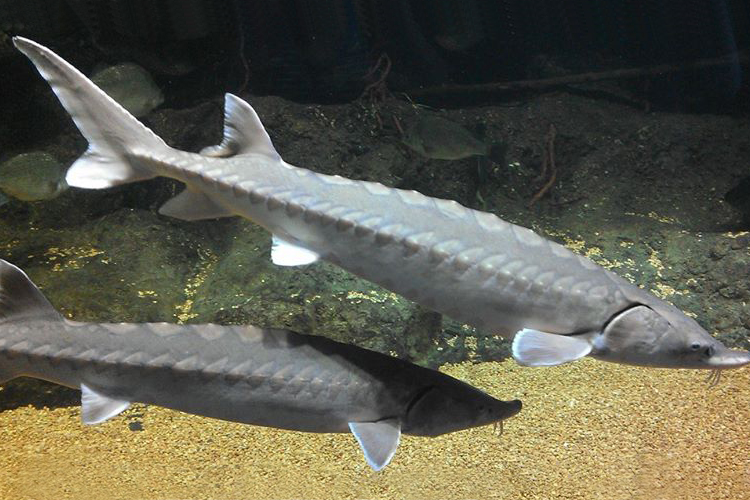Hudson River Chronicles: From Pollution to Preservation
The Hudson River, a vital artery of the northeastern United States, has long captivated those who live along its banks and beyond. Its waters, stretching over 315 miles from the Adirondack Mountains to the Atlantic Ocean, have witnessed centuries of history, commerce, and ecological evolution. Today, the Hudson remains a focal point for environmental conservation, biodiversity, and community livelihood. However, understanding the past and present state of its waters reveals a complex interplay of natural beauty, human intervention, and ongoing challenges.
Historical Context: From Pristine Waters to Industrial Use
Before European settlers arrived, the Hudson River—known as "Mahicantuck" or "the river that flows two ways" by the Lenape people—was pristine, supporting an abundance of fish, shellfish, and wildlife. The river’s estuary provided an ideal environment for species such as sturgeon, striped bass, and eels to thrive.
The Industrial Revolution in the 19th century marked a turning point for the Hudson. Factories, including paper mills, textile plants, and chemical manufacturers, used the river both as a power source and a dumping ground. By the mid-20th century, the Hudson had become one of the most polluted rivers in the United States, with raw sewage, heavy metals, and industrial chemicals—most notably PCBs (polychlorinated biphenyls)—entering its waters.
“The Hudson River became a symbol of environmental degradation,” says Dr. Peter Groffman, an ecologist at the Cary Institute of Ecosystem Studies. “Its recovery is a testament to the power of public advocacy and science-based policymaking.”
Turning the Tide: Environmental Advocacy and Legislation
The 1960s and 1970s were pivotal decades for the Hudson River. Activists like Pete Seeger and organizations such as Riverkeeper and Scenic Hudson mobilized communities to demand cleaner waters. Their efforts culminated in landmark legislation, including the Clean Water Act of 1972, which provided federal protection against industrial and municipal pollution.
One of the most significant victories came in the form of legal action against General Electric, which had dumped an estimated 1.3 million pounds of PCBs into the Hudson between 1947 and 1977. In 2009, after decades of advocacy and litigation, the company began a multi-year dredging project to remove contaminated sediments. While these efforts have significantly reduced PCB levels, the river remains a Superfund site, and advisories against consuming certain fish species persist.
The Current State of the Hudson’s Waters
Today, the Hudson River is a study in contrasts. On one hand, water quality has improved dramatically, with many sections meeting standards for recreational use. On the other, legacy pollutants like PCBs and emerging contaminants such as microplastics and pharmaceuticals pose ongoing threats.
“We’ve made incredible progress, but we can’t rest on our laurels,” notes Paul Gallay, former president of Riverkeeper. “The Hudson is a dynamic system that requires constant vigilance and adaptive management.”
The river’s health also varies by location. The upper Hudson, closer to its mountainous source, remains relatively pristine, while the urbanized lower Hudson faces pressures from stormwater runoff, sewage overflows, and industrial discharges. Rising sea levels and increasing storm intensity due to climate change further complicate the picture, threatening the river’s delicate balance of salinity and freshwater.
Ecological Impacts: A Home for Wildlife
Despite its challenges, the Hudson River estuary is one of the most biodiverse ecosystems on the East Coast. It serves as a critical habitat for over 200 fish species, including iconic species like the Atlantic sturgeon, which has been listed as endangered. Migratory birds, such as bald eagles and osprey, depend on the river for food and nesting sites.
The restoration of habitats, including tidal wetlands and submerged aquatic vegetation, has played a crucial role in supporting wildlife. For example, initiatives to replant eelgrass beds have provided spawning grounds for fish and refuge for juvenile species.
However, the presence of pollutants continues to affect wildlife. Studies have shown that PCBs accumulate in the tissues of fish and other aquatic organisms, impacting their health and reproduction. Additionally, microplastics—tiny fragments of degraded plastic—have been found throughout the river, raising concerns about their ingestion by both wildlife and humans.
Influences on Communities and Culture
The Hudson River has always been more than a body of water; it is a cultural touchstone and an economic engine. Artists of the Hudson River School immortalized its landscapes, while writers like Washington Irving drew inspiration from its shores. Today, the river supports a thriving tourism industry, with activities such as kayaking, fishing, and river cruises attracting millions of visitors annually.
For communities along its banks, the Hudson provides drinking water, recreational opportunities, and a sense of identity. Yet, disparities exist. Urban areas like Poughkeepsie and Newburgh face higher pollution risks and fewer resources for restoration compared to wealthier towns upstream.
Future Challenges and Opportunities
Looking ahead, the Hudson River faces both challenges and opportunities. Climate change looms large, with rising temperatures and sea levels threatening to disrupt ecosystems and infrastructure. To address these risks, organizations and government agencies are investing in resilience projects, such as shoreline stabilization and green infrastructure.
Emerging technologies also offer hope. Innovations in water quality monitoring, such as real-time sensors, allow for more effective management. Citizen science programs, like the Hudson River Estuary Program, engage local residents in conservation efforts, fostering a sense of stewardship.
“The Hudson River’s story is one of resilience,” says Frances Dunwell, author of The Hudson: America’s River. “Its recovery shows what can be achieved when communities, scientists, and policymakers come together with a shared vision.”
Conclusion: A River Worth Protecting
The Hudson River’s waters tell a tale of transformation—from pristine origins to industrial abuse and, finally, to an ongoing recovery. While challenges remain, the river’s resilience is a testament to the power of collective action and the enduring relationship between people and nature. As we navigate the complexities of the 21st century, the Hudson reminds us of our responsibility to protect and cherish the natural world.
Whether as a home for wildlife, a source of inspiration, or a lifeline for communities, the Hudson River continues to flow—a living symbol of hope and renewal.





